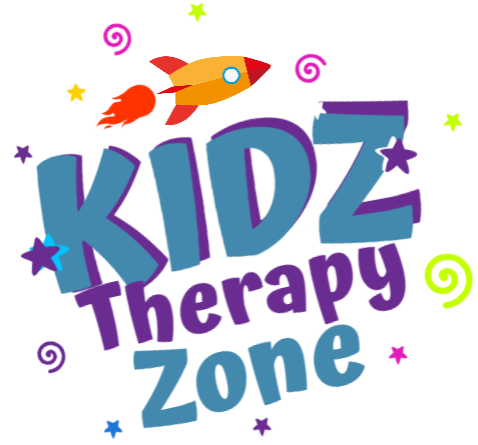Pediatric therapy is a multidisciplinary field aimed at fostering optimal development in children with various challenges. Three essential therapies often involved in pediatric care are speech therapy, feeding therapy, and occupational therapy. These therapies are interconnected, frequently overlapping in their goals and approaches, yet each serves a distinct purpose. This blog post delves into the roles of these therapies and how they relate, especially in the context of pediatric care.
Speech Therapy: Communication and Beyond
Speech therapy focuses on addressing issues related to communication, language, and speech production. It also extends to non-verbal communication, swallowing disorders, and oral motor skills. Speech-language pathologists (SLPs) work with children to improve skills that enable them to express themselves, engage socially, and manage basic life functions like eating and drinking.
Key Areas of Focus in Pediatric Speech Therapy
- Speech Disorders
- Articulation: Difficulty pronouncing sounds correctly.
- Fluency: Challenges like stuttering or cluttering.
- Voice: Issues with pitch, volume, or vocal quality.
- Language Disorders
- Receptive Language: Difficulty understanding spoken or written language.
- Expressive Language: Trouble conveying thoughts or ideas effectively.
- Swallowing and Feeding Disorders
Many SLPs specialize in dysphagia treatment, addressing difficulties in swallowing or oral motor control, which often overlaps with feeding therapy. - Social Communication
Teaching children how to use language effectively in social contexts.
Feeding Therapy: Beyond Nutrition
Feeding therapy, often led by either SLPs or occupational therapists, addresses the physical and behavioral challenges related to eating and drinking. It’s not just about nutrition—it’s about ensuring that a child can safely and effectively feed themselves while enjoying the experience.
What Feeding Therapy Addresses
- Oral Motor Skills: Strength and coordination of the lips, tongue, and jaw.
- Sensory Processing: Managing aversions to certain textures, tastes, or temperatures.
- Swallowing Safety: Ensuring children can swallow without choking or aspirating.
- Behavioral Challenges: Anxiety or refusal to eat certain foods.
SLP’s Role in Feeding Therapy
SLPs focus on the mechanics of eating—chewing, swallowing, and oral motor control. For children who have trouble transitioning from bottles to solid foods or demonstrate signs of dysphagia, SLPs play a pivotal role in identifying and addressing underlying issues.
Occupational Therapy: Holistic Development
Occupational therapy (OT) in pediatrics promotes independence in daily activities, including self-care, play, and learning. While speech therapy often focuses on communication and feeding therapy on oral motor skills, OT takes a broader approach to address the developmental and sensory challenges that may contribute to feeding or communication difficulties.
Key Areas of Focus in Pediatric OT
- Fine and Gross Motor Skills
- Developing hand strength for tasks like writing or buttoning clothes.
- Improving core strength and balance for sitting at a table during meals.
- Sensory Integration
- Helping children process sensory input (textures, sounds, lights) appropriately.
- Behavior and Regulation
- Teaching self-regulation strategies to manage frustration or overstimulation.
- Feeding and Eating
- Addressing sensory aversions to food textures.
- Teaching children to use utensils or cups.
How These Therapies Overlap
1. Feeding Challenges
Feeding therapy sits at the intersection of speech and occupational therapy. While SLPs focus on the mechanics of swallowing and oral motor control, OTs tackle sensory processing issues or fine motor skills needed to handle utensils.
Example:
A child with sensory aversion to crunchy foods might benefit from OT strategies for sensory integration and SLP techniques to practice chewing and swallowing.
2. Social and Communication Skills
Both SLPs and OTs contribute to a child’s social development. While SLPs teach children how to express themselves verbally, OTs help them manage sensory stimuli in social environments.
Example:
A child with autism who struggles with both sensory overload and verbal communication might work with an OT to tolerate crowded spaces and with an SLP to develop functional language.
3. Co-Treatment Opportunities
In many pediatric therapy settings, co-treatment sessions allow OTs and SLPs to collaborate. For instance, during a mealtime session, an OT might focus on posture and utensil use, while an SLP addresses oral motor skills and safe swallowing.
When to Seek Therapy for Your Child
Parents often wonder whether their child needs one or more therapies. Here are some signs that may indicate the need for intervention:
Speech Therapy
- Delayed speech or language development.
- Difficulty pronouncing sounds or forming words.
- Challenges in understanding or following instructions.
Feeding Therapy
- Choking, gagging, or coughing during meals.
- Refusal to eat certain textures or types of food.
- Delayed transition to solid foods.
Occupational Therapy
- Difficulty with self-care tasks like dressing or eating.
- Sensory sensitivities to textures, lights, or sounds.
- Challenges with motor skills like holding a pencil or climbing stairs.
The Importance of a Multidisciplinary Approach
Children with complex developmental needs often require support from multiple therapies. Collaboration among SLPs, OTs, and feeding therapists ensures a holistic approach that addresses all facets of a child’s challenges.
For example:
- A child with cerebral palsy might see an OT for posture and coordination, an SLP for speech and swallowing, and a feeding therapist for transitioning to more complex foods.
- A child with sensory processing disorder might receive OT for sensory integration and SLP support for social communication.
Conclusion
Speech therapy, feeding therapy, and occupational therapy each play a vital role in pediatric care. While their focuses differ, these therapies often overlap and complement each other in addressing a child’s unique developmental needs. By working together, therapists can provide comprehensive, individualized care that empowers children to reach their full potential.

